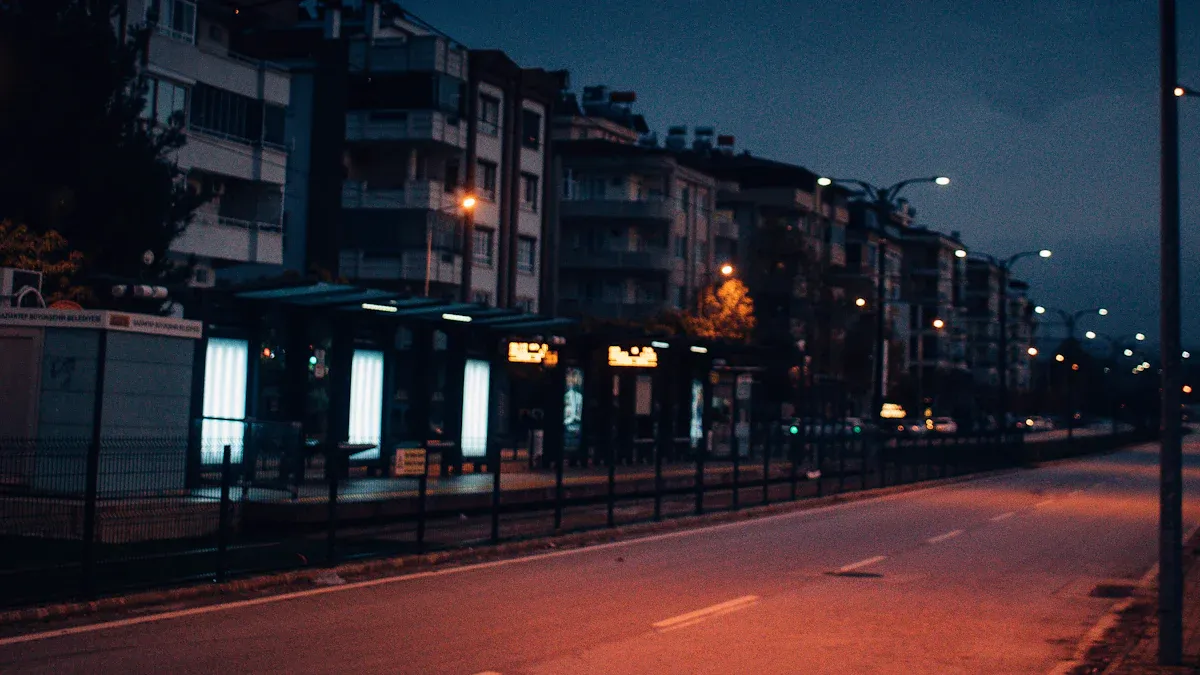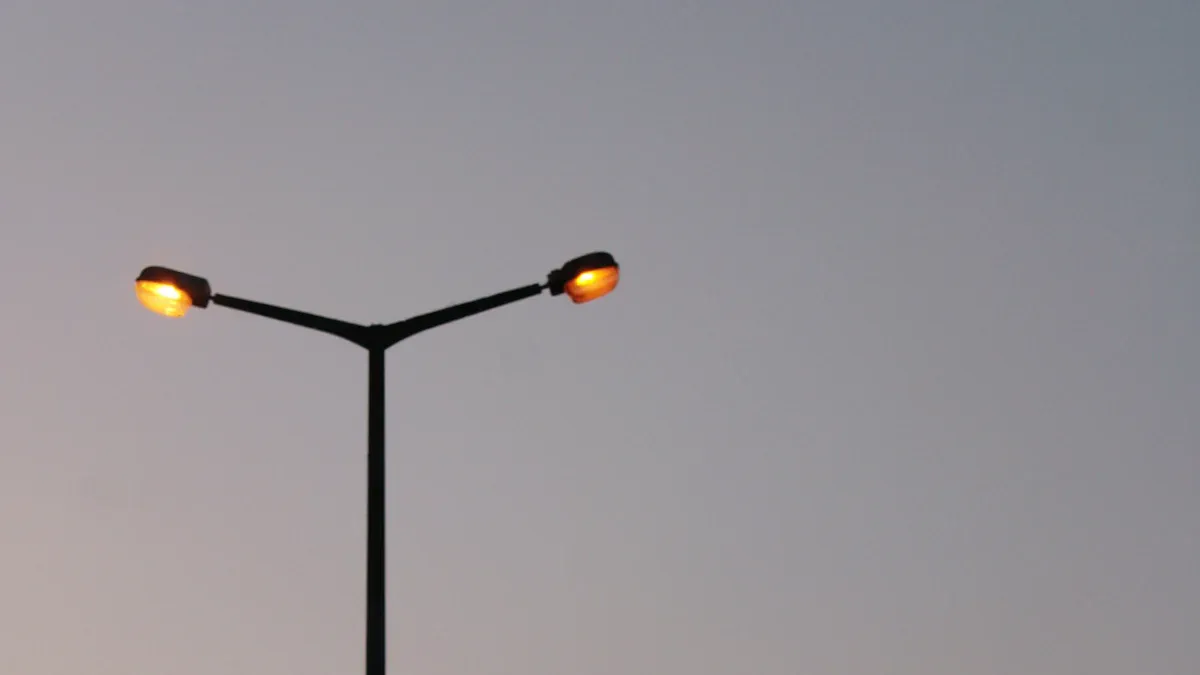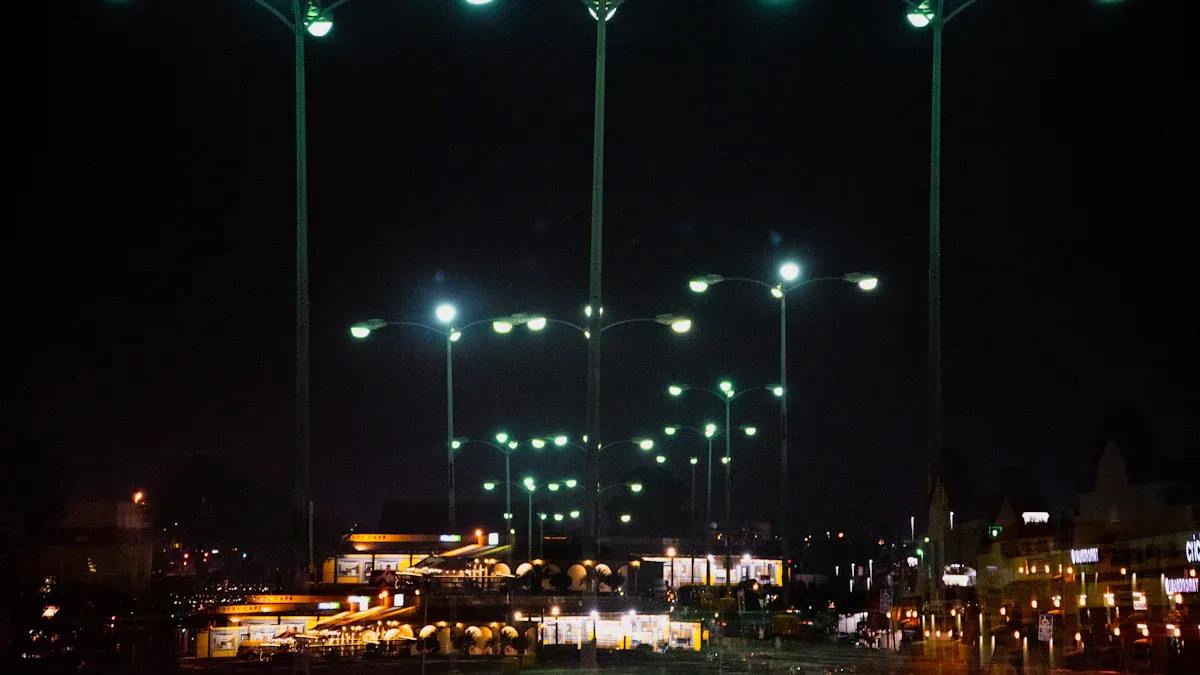LED Street Bulbs: Energy Efficiency, Lifespan, and Installation Benefits for Modern Lighting

LED street bulbs are revolutionizing city lighting with improved energy efficiency. They consume 50% to 75% less energy than traditional lights, making them a more cost-effective and intelligent choice for cities. For instance, Los Angeles replaced over 140,000 streetlights, resulting in a 63% reduction in energy use and saving millions annually. These solar street light products can last up to 100,000 hours, which minimizes waste and maintenance needs. Cities like New York benefit from $14 million in annual savings on energy and repairs by utilizing LED lights. Transitioning to these energy-efficient solutions not only benefits the environment but also enhances urban planning.
Key Takeaways
LED street bulbs use 50% to 75% less power than old lights. This helps cities save a lot of money.
These bulbs can work for up to 100,000 hours. This means fewer replacements and less fixing is needed.
Smart controls make LEDs better by changing brightness. This saves energy and helps the bulbs last longer.
Putting in LED street lights is fast and simple. It causes less trouble and saves time for city work.
Using LED lights helps the planet by cutting greenhouse gases. It also lowers light pollution.
Energy Efficiency in LED Street Lights

Reduced Energy Consumption
LED street lights save energy and are better for cities. They turn more electricity into light and waste less as heat. LEDs need only 30 to 50 watts to shine as bright as a 100-watt sodium lamp. Cities using LEDs can cut energy use by 50-80%. For example, New York City saves $4.5 million yearly after switching to LEDs. Using less energy lowers bills and helps the planet.
Environmental Impact
LED street lights are good for the environment. They use less energy, which means fewer greenhouse gases are released. Unlike old lights, LEDs have no mercury and can be recycled. The U.S. EPA says switching all street lights to LEDs could save as much energy as 1.5 million homes use in a year. LEDs also reduce light pollution by focusing light where it’s needed. These features help cities lower their carbon footprint and protect the planet.
Smart Controls for Energy Savings
Smart controls make LED street lights even more efficient. They adjust brightness based on what’s needed at the time. This saves energy and cuts costs by up to 50%. Cities like Los Angeles use smart LEDs and save millions each year. These systems also make lights last longer and need less fixing. Smart controls are a smart choice for modern city lighting.
Lifespan of LED Street Lights
Longer Life Than Old Lights
LED street lights last much longer than older lights. High-pressure sodium (HPS) and metal halide (MH) lamps work for 15,000 to 30,000 hours. LEDs, however, can shine for 50,000 to 100,000 hours. This means fewer replacements, saving time and effort.
Lighting Type | Lifespan (Years) |
|---|---|
LED Street Lights | |
High-Pressure Sodium | Varies |
Metal Halide Lamps | Varies |
Switching to LEDs means fewer replacements and lower costs. For example, Los Angeles found LED failure rates were under 20%, while older lights failed over 50% of the time.
Strong and Reliable
LED street lights are tough and dependable. They are made to handle bad weather and tough conditions. Good LEDs have systems to stop overheating, which helps them last longer. They are tested for heat, water, and extreme weather to ensure they work well.
These lights stay bright and steady even in hard conditions. Their strength means fewer repairs are needed. With LEDs, streets and public spaces stay well-lit for years.
Less Maintenance Needed
LED street lights need less fixing because they last longer. Older lights like HPS and MH lamps need replacing every few years. LEDs can last up to 25 years, depending on how they’re used. This saves time and money.
LEDs last 50,000 to 100,000 hours, while older lights last 10,000 to 20,000 hours.
New York City saved $14 million yearly by switching to LEDs.
Solar-powered LEDs need little care, just a yearly battery check and cleaning.
Choosing LEDs cuts maintenance costs and frees up money for other projects. Their long life and low failure rates make them a smart choice for city lighting.
Installation Benefits of LED Street Lights

Easy to Install
LED street lights are simple and quick to set up. They are lightweight and have a modular design, making them easy to handle. Unlike older lights, they don’t need heavy tools or big teams to install. This makes upgrading city lights faster and less work.
Installing them correctly helps them last longer and work better. Many LED lights have plug-and-play options, so workers can set them up easily. This makes LEDs a great choice for cities wanting better lights without causing big disruptions.
Saves Money on Setup
Switching to LED street lights saves money over time. While they cost more at first, the savings on energy and repairs are worth it. Cities using LEDs pay less for electricity and fixing lights. For example, Los Angeles saved millions each year after installing over 140,000 LEDs.
Most cities get back their money in 3-5 years because LEDs use less energy and last longer. As energy prices rise, these savings grow even more. LEDs also need much less fixing, saving cities thousands of dollars every year.
Fits Modern City Plans
LED street lights work well with today’s city plans. They save energy and help cities meet green goals by cutting pollution. For example, Paris replaced 200,000 lights with LEDs to lower carbon emissions by 40%.
Smart LED systems make streets safer by improving visibility and reducing accidents at night. One U.S. city saw a 40% drop in energy use and fewer accidents after replacing 1,000 old lights with smart LEDs. These systems also connect to networks for real-time control and monitoring.
LED street lights do more than light up streets. They help make cities safer, greener, and more efficient.
LED street lights are great for today’s city lighting needs. They use less power and can last up to 100,000 hours. This means less waste and fewer repairs are needed. Installing them is easy and saves both time and money. Switching to LEDs helps cut energy costs and lowers pollution. It also supports eco-friendly goals for cities. Governments offer grants and tax breaks to make the switch affordable. Using LED lights creates brighter, safer, and cleaner neighborhoods for the future.
FAQ
Why are LED street lights better for the environment?
LED street lights help the planet by using less energy. They lower greenhouse gases and don’t have harmful materials like mercury. They can also be recycled. Their focused light reduces light pollution, making them a green choice for cities.
Can solar street lights work when it’s cloudy?
Yes, solar street lights work even on cloudy days. They store sunlight in batteries during sunny times. This stored energy keeps them running when there’s no sun. They provide steady light and support eco-friendly goals.
How do LED street lights save money?
LED street lights use less power and last longer. This lowers energy bills and repair costs. Cities save money quickly after switching to LEDs because of these benefits.
Are LED street lights hard to maintain?
No, LED street lights are easy to take care of. They last a long time and are built to be strong. Solar street lights only need cleaning and battery checks sometimes. This makes them very efficient.
Do LED street lights fit with city green plans?
Yes, LED street lights match city eco-friendly goals. They use less energy, cut pollution, and are good for the environment. Many cities use them to make urban areas greener and more efficient.
See Also
Exploring GE LED Bulbs: Key Features And Selection Advice
Understanding LED Replacement Lights: Varieties And Advantages
Industrial LED Bulbs: Efficiency, Uses, And Choosing Tips

